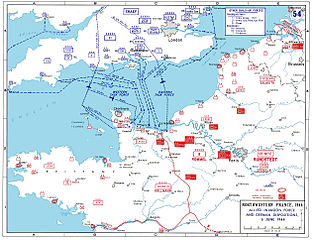As I read about western front during the WW2 there is usually big topic about the "D-Day", then clearing Normandy (capturing Cherbourg), then liberating Paris and then authors quickly move to "Race to the Rhine" and "Market-Garden".
All the maps usually cover only this area:

However, as we know, France was divided in two states:

There surely were German forces in the southern part of occupied France; eg. there was a submarine base in La Rochelle.
The Wikipedia article about the city says:
A German stronghold, La Rochelle was the last French city to be liberated at the end of the war. The Allied siege of La Rochelle took place between 12 September 1944, and 7 May 1945; the stronghold, including the islands of Ré and Oléron, was held by 20,000 German troops under a German vice-admiral Ernst Schirlitz. Following negotiations by the French Navy frigate captain Meyer, and the general German capitulation on 7 May, French troops entered La Rochelle on 8 May.
So the surrender took place at the very end of the war, still having German forces behind.
Another article mentions:
The allied siege of the pocket of La Rochelle lasted from September 1944 to May 1945, without heavy bombardment. La Rochelle remained in German hands until the end of the war, much as other Atlantic harbours such as Brest, Saint-Nazaire, Lorient, Gironde-Nord, Gironde-Sud because the main thrust of the war was more concerned with focusing on Germany itself.
So some garrisons were separated from allied forces, but I'm not sure if Allies should not expect some mobile forces, from Vichy France too, as the other Allied assault, Operation Dragoon, which took place at the similar time as Overlord, was performed nearby Marseilles, so the central France, (cities like Toulouse, Clermont-Ferrand, Orleans), could have also been a good place to start a counter-offensive.
Did the Allies secure the central France or maybe they did not fear any danger? Why then?